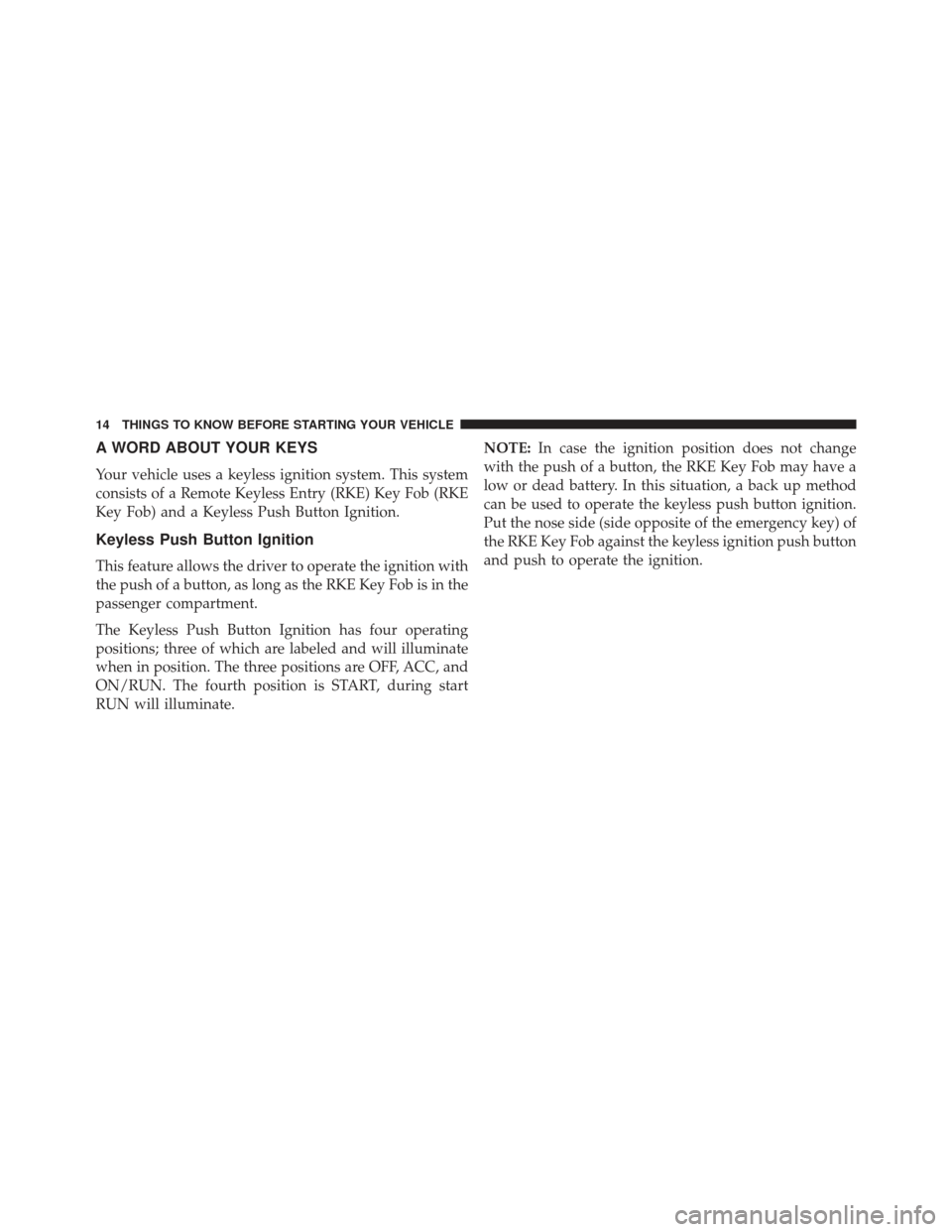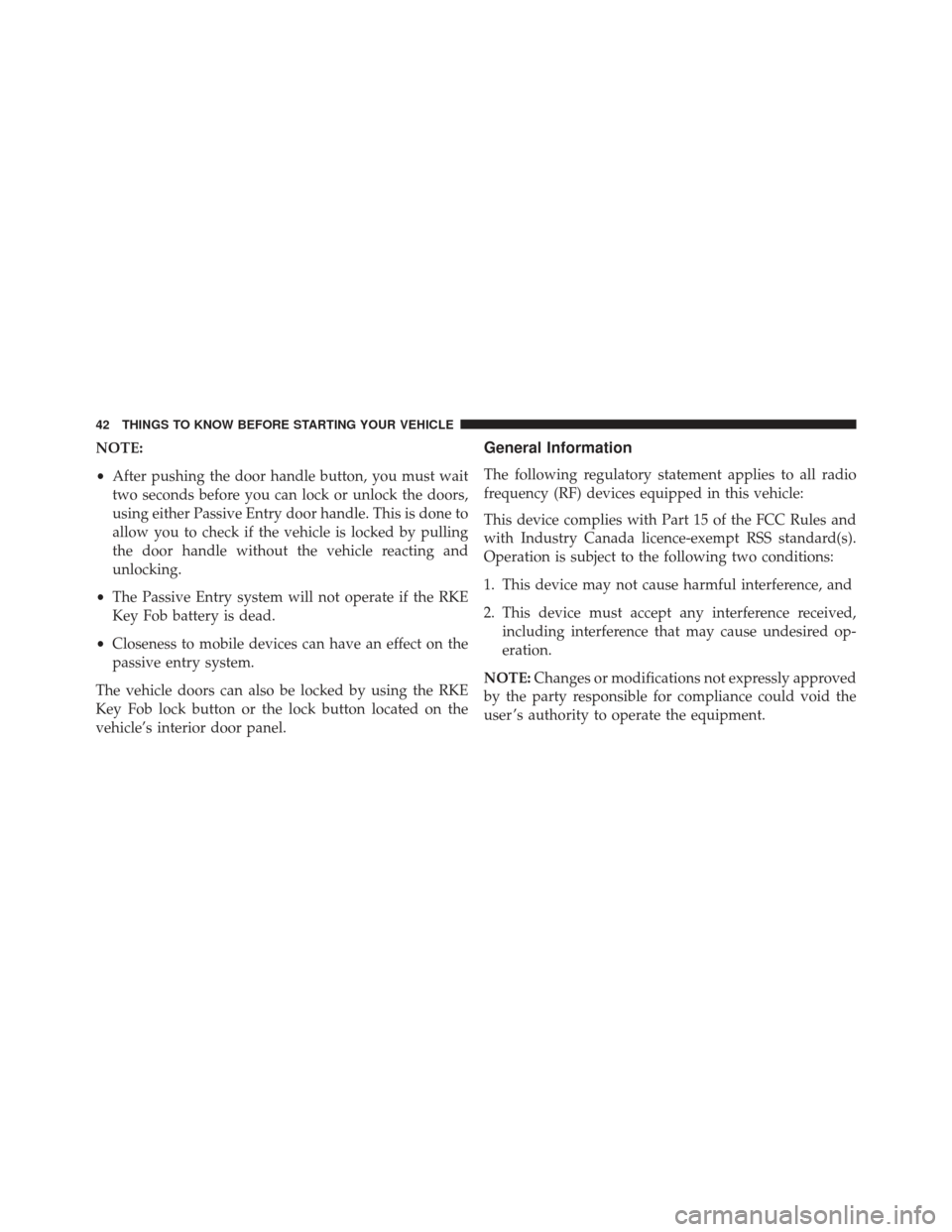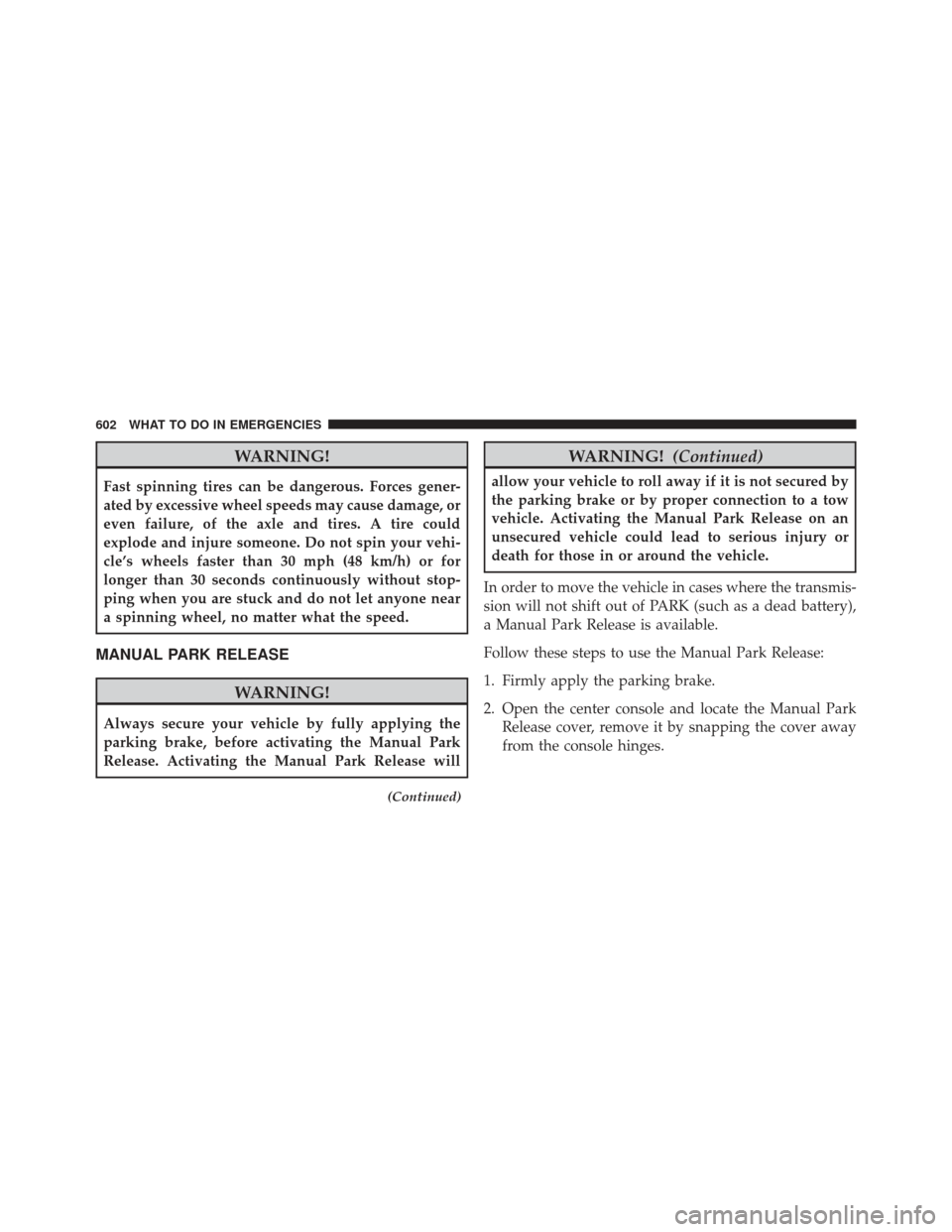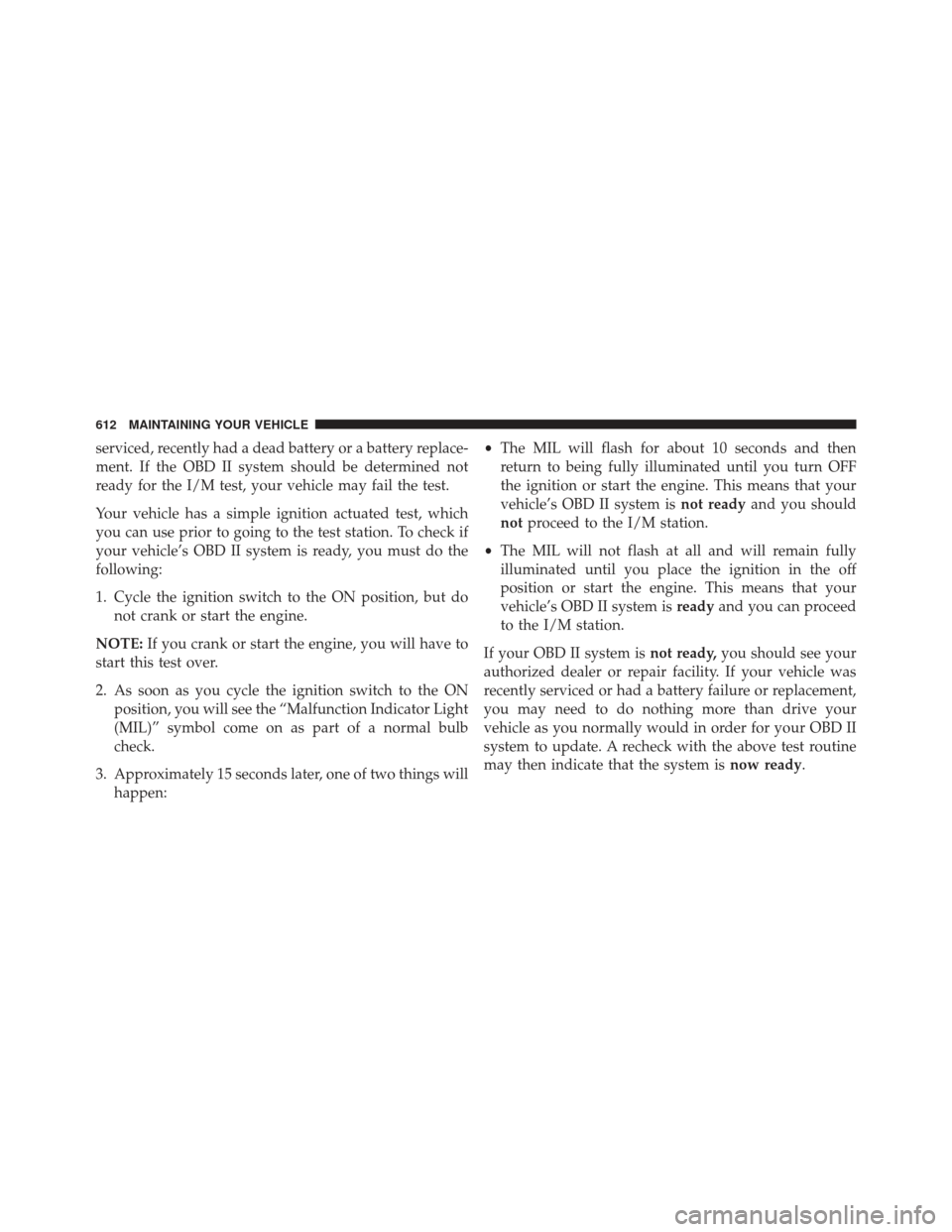Page 16 of 723

A WORD ABOUT YOUR KEYS
Your vehicle uses a keyless ignition system. This system
consists of a Remote Keyless Entry (RKE) Key Fob (RKE
Key Fob) and a Keyless Push Button Ignition.
Keyless Push Button Ignition
This feature allows the driver to operate the ignition with
the push of a button, as long as the RKE Key Fob is in the
passenger compartment.
The Keyless Push Button Ignition has four operating
positions; three of which are labeled and will illuminate
when in position. The three positions are OFF, ACC, and
ON/RUN. The fourth position is START, during start
RUN will illuminate.NOTE:
In case the ignition position does not change
with the push of a button, the RKE Key Fob may have a
low or dead battery. In this situation, a back up method
can be used to operate the keyless push button ignition.
Put the nose side (side opposite of the emergency key) of
the RKE Key Fob against the keyless ignition push button
and push to operate the ignition.
14 THINGS TO KNOW BEFORE STARTING YOUR VEHICLE
Page 17 of 723
RKE Key Fob
The RKE Key Fob contains an emergency key, which
stores in the rear of the RKE Key Fob.
The emergency key allows for entry into the vehicle
should the battery in the vehicle or the RKE Key Fob godead. The emergency key is also for locking the glove
box. You can keep the emergency key with you when
valet parking.
To remove the emergency key, slide the mechanical latch
at the top of the RKE Key Fob sideways with your thumb
and then pull the key out with your other hand.
Keyless Push Button Ignition
Emergency Key Removal
2
THINGS TO KNOW BEFORE STARTING YOUR VEHICLE 15
Page 44 of 723

NOTE:
•After pushing the door handle button, you must wait
two seconds before you can lock or unlock the doors,
using either Passive Entry door handle. This is done to
allow you to check if the vehicle is locked by pulling
the door handle without the vehicle reacting and
unlocking.
• The Passive Entry system will not operate if the RKE
Key Fob battery is dead.
• Closeness to mobile devices can have an effect on the
passive entry system.
The vehicle doors can also be locked by using the RKE
Key Fob lock button or the lock button located on the
vehicle’s interior door panel.General Information
The following regulatory statement applies to all radio
frequency (RF) devices equipped in this vehicle:
This device complies with Part 15 of the FCC Rules and
with Industry Canada licence-exempt RSS standard(s).
Operation is subject to the following two conditions:
1. This device may not cause harmful interference, and
2. This device must accept any interference received, including interference that may cause undesired op-
eration.
NOTE: Changes or modifications not expressly approved
by the party responsible for compliance could void the
user ’s authority to operate the equipment.
42 THINGS TO KNOW BEFORE STARTING YOUR VEHICLE
Page 604 of 723

WARNING!
Fast spinning tires can be dangerous. Forces gener-
ated by excessive wheel speeds may cause damage, or
even failure, of the axle and tires. A tire could
explode and injure someone. Do not spin your vehi-
cle’s wheels faster than 30 mph (48 km/h) or for
longer than 30 seconds continuously without stop-
ping when you are stuck and do not let anyone near
a spinning wheel, no matter what the speed.
MANUAL PARK RELEASE
WARNING!
Always secure your vehicle by fully applying the
parking brake, before activating the Manual Park
Release. Activating the Manual Park Release will
(Continued)
WARNING!(Continued)
allow your vehicle to roll away if it is not secured by
the parking brake or by proper connection to a tow
vehicle. Activating the Manual Park Release on an
unsecured vehicle could lead to serious injury or
death for those in or around the vehicle.
In order to move the vehicle in cases where the transmis-
sion will not shift out of PARK (such as a dead battery),
a Manual Park Release is available.
Follow these steps to use the Manual Park Release:
1. Firmly apply the parking brake.
2. Open the center console and locate the Manual Park Release cover, remove it by snapping the cover away
from the console hinges.
602 WHAT TO DO IN EMERGENCIES
Page 614 of 723

serviced, recently had a dead battery or a battery replace-
ment. If the OBD II system should be determined not
ready for the I/M test, your vehicle may fail the test.
Your vehicle has a simple ignition actuated test, which
you can use prior to going to the test station. To check if
your vehicle’s OBD II system is ready, you must do the
following:
1. Cycle the ignition switch to the ON position, but donot crank or start the engine.
NOTE: If you crank or start the engine, you will have to
start this test over.
2. As soon as you cycle the ignition switch to the ON position, you will see the “Malfunction Indicator Light
(MIL)” symbol come on as part of a normal bulb
check.
3. Approximately 15 seconds later, one of two things will happen: •
The MIL will flash for about 10 seconds and then
return to being fully illuminated until you turn OFF
the ignition or start the engine. This means that your
vehicle’s OBD II system is not readyand you should
not proceed to the I/M station.
• The MIL will not flash at all and will remain fully
illuminated until you place the ignition in the off
position or start the engine. This means that your
vehicle’s OBD II system is readyand you can proceed
to the I/M station.
If your OBD II system is not ready,you should see your
authorized dealer or repair facility. If your vehicle was
recently serviced or had a battery failure or replacement,
you may need to do nothing more than drive your
vehicle as you normally would in order for your OBD II
system to update. A recheck with the above test routine
may then indicate that the system is now ready.
612 MAINTAINING YOUR VEHICLE